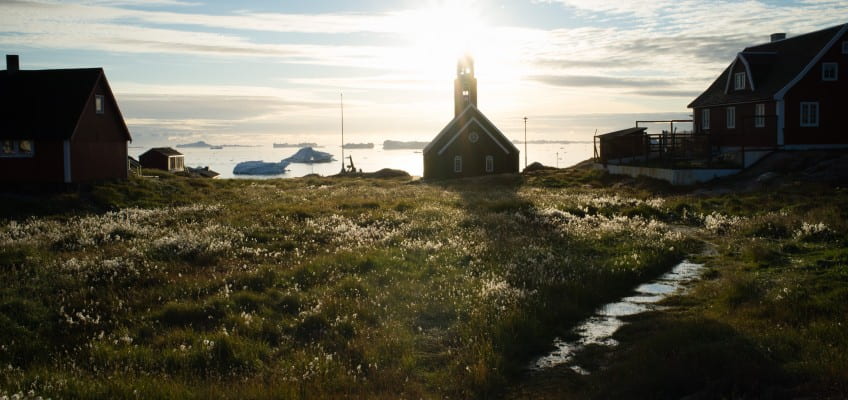Greenland, the world’s largest island, is bigger than Mexico but has a population of just 56,000 scattered in a few coastal towns and remote settlements, making it the least populated country on Earth. Its tortuous coast is notable for fishing harbors and chained, barking work dogs of a single breed. No other breed is allowed here north of the Arctic Circle. But mostly Greenland is a mile-thick hunk of ancient ice that holds 9 percent of the world’s water.
Although it’s part of North America, Greenland – also known as Kalaallit Nunaat – is an autonomous nation in the Kingdom of Denmark, and most Greenlanders are part Inuit and part Danish. Knud Rasmussen, the best-known Greenlander, brought Eskimo-Inuit culture to the rest of the world. He made brutally difficult expeditions by dogsled and boat across the Arctic, from his native Ilulissat in western Greenland across Baffin Bay into Canada, Alaska and Siberia. He found common language and customs across thousands of miles and was the first person to record widespread Inuit culture.
Some Greenlanders today, particularly young people, are not upset about climate change – they like the idea of warmer winters, the possibility of more jobs in ruby or diamond mining, and other economic advances. Old-timers mourn the loss of dogsled trails to slush and the decline of traditional seal and musk ox hunting. But mostly Greenland is one thing: ice. It’s so huge and so uninhabited that the scattered coastal residents have divided it into just four territories: Sermersooq (“Much Ice”), Kujalleq (“South”), Qeqqata (“Centre”) and Qaasuitsup (“Darkness”). The entire northeast side of the island is the unincorporated Northeast Greenland National Park.
If Greenland’s entire 840,000-square-mile ice sheet melted, sea levels would rise globally by 21 feet, according to the Intergovernmental Panel on Climate Change. And it has begun happening – not like in Antarctica, where ice sheets the size of Ohio are breaking off into the ocean, but in the steady drip, drip, drip of glaciers into thousands of deep fjords. The fjords, in turn, funnel warming, salty water from the Atlantic up against the glacier faces, fueling even greater melt.
[metaslider id=434]

